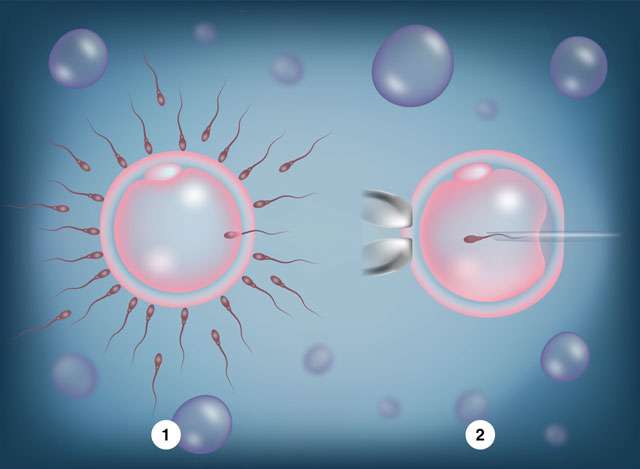After fertilization is completed, the embryo is incubated for a few days (3 to 5 days) and under controlled conditions before being transferred inside the woman’s uterus. It is only after 18 hours of bringing the oocytes and spermatozoa into contact that the embryologist will be able to assess whether or not the oocytes have fertilized as well as the number of healthy embryos obtained.
Nowadays, considering that the results obtained using the ICSI technique are significantly better than a conventional IVF, more and more specialists are offering couples directly to perform an ICSI procedure.
An IVF / ICSI treatment therefore involves a whole process that includes several steps:
-
- Complete all investigations and screening for infectious diseases
- Ovarian hyperstimulation in order to collect many mature oocytes
- The oocyte puncture during which the oocytes are collected
- Collection of sperm sperm, fresh (in laboratory) or frozen
- Laboratory fertilization of collected oocytes
- Culture of embryos in the laboratory for 3 to 5 days, in an embryoscope
- Transfer of one or two embryos to the uterus
- Cryopreservation, or freezing, of additional embryos of good quality in order to benefit later
In vitro fertilization is a technique and major aspect of assisted reproductive technology. However, it cannot be the answer to all the problems associated with infertility.




